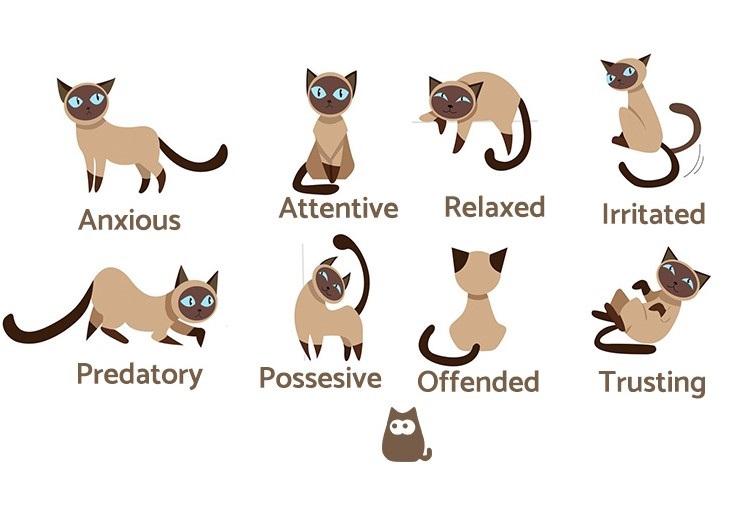Do you ever wonder what your cat is trying to tell you? Cats have a unique way of communicating through their body language, and one of the most important parts to pay attention to is their tail. By decoding the movements and positions of your cat’s tail, you can gain insight into their emotions and intentions.
First, let’s talk about tail positions. A straight-up tail indicates that your cat is feeling confident and content. On the other hand, a tucked tail between the legs suggests fear or submission. If your cat’s tail is curled around their body, it means they are relaxed and comfortable. Understanding these different positions can help you gauge your cat’s mood and respond accordingly.
Now, let’s dive into tail movements. A flicking tail often signifies annoyance or agitation. If your cat’s tail is wagging rapidly, it could mean they are excited or playful. On the other hand, a lashing tail indicates anger or aggression. By observing these movements, you can better understand your cat’s emotions and communicate with them effectively.
Remember, each cat is unique, and their tail language may vary slightly. It’s important to pay attention to their overall body language and context to get a complete understanding. So next time you see your cat’s tail twitching or held high, take a moment to decode their message and strengthen your bond.
Tail Positions

When a cat holds its tail straight up in the air, it typically indicates a confident and content mood. This position is often seen when a cat is greeting you or marking its territory. On the other hand, if the tail is tucked between the legs, it suggests fear, anxiety, or submission. It’s important to create a calm and safe environment for your cat in such situations.
A curled tail is a common sight among cats, and it can have different meanings depending on the position. If the tail is loosely curled, it signifies relaxation and a positive mood. However, if the tail is tightly curled around the body, it may indicate stress or aggression. Pay attention to other body language cues to accurately interpret your cat’s emotions.
In addition to these positions, cats may also use their tails to communicate playfulness or irritation. A tail held low and wagging gently is a sign of excitement and readiness to play. On the other hand, a tail lashing from side to side can indicate annoyance or aggression. It’s important to respect your cat’s boundaries and give them space when they display signs of irritation.
By observing and understanding your cat’s tail positions, you can develop a deeper connection with your furry companion and provide them with the care and attention they need. Remember to consider other body language cues and the overall context to accurately interpret your cat’s emotions.
Tail Movements

Flicking: When a cat flicks their tail back and forth rapidly, it typically indicates agitation or annoyance. This could be a sign that they are feeling threatened or irritated and may lash out if provoked further.
Wagging: Similar to a dog’s wagging tail, a cat’s wagging tail can indicate excitement or anticipation. It may signify that they are happy and content, especially if accompanied by purring or a relaxed body posture.
Lashing: If a cat’s tail is lashing from side to side vigorously, it is a clear sign of aggression. They may be preparing to attack or defend themselves, and it’s important to give them space and avoid any potential triggers.
It’s crucial to consider the context and other body language cues when interpreting tail movements. For example, a slightly raised tail that is quivering can indicate a playful mood, while a tail held low and puffed up may signal fear or anxiety.
By paying attention to your cat’s tail movements and combining them with other behavioral cues, you can develop a better understanding of their emotions and enhance your bond with them. Remember, each cat is unique, so take the time to observe and learn their individual tail language.
